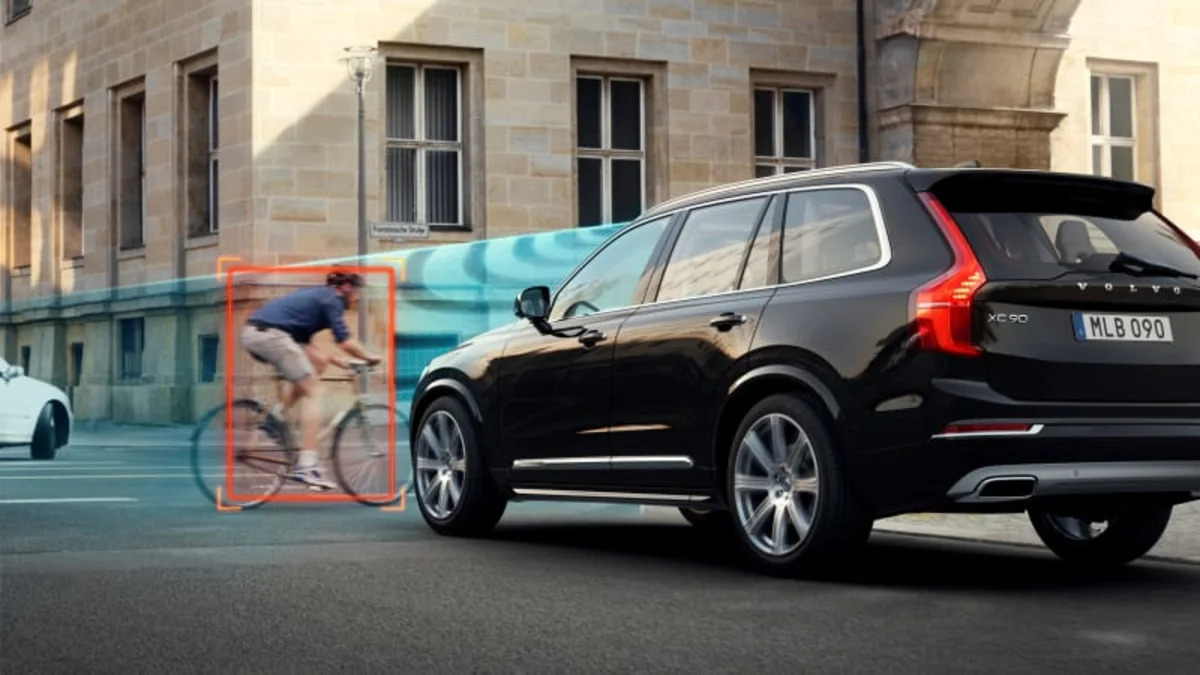The National Highway Traffic Safety Administration and the non-profit Insurance Institute for Highway Safety together announced data related to the number of cars sold in 2017 that featured automatic emergency braking systems. We can't say it was especially surprising, but one truth seems to emerge: they are, perhaps obviously, far more common in brands that provide auto braking as standard equipment across the bulk of a model's trim lineup. If it's an option, and especially if it's restricted to a package exclusive to an upper trim level, people will skip it.
Toyota sold the largest number of vehicles with automatic braking -- 1.4 million cars out of 2.5 total -- which is indicative of the fact that many of its cars and crossovers come standard with it as part of the company's Toyota Safety Sense package. That number should also go up in 2018 as the new Camry comes standard with Toyota Safety Sense.
GM was next, selling 551,777 vehicles. This is somewhat of an outlier as safety tech is almost always optional on GM's volume-selling vehicles, however, it's also widespread and available throughout most of their models' trim levels. GM also had the advantage in selling 2.8 million cars total last year. Honda was third with 492,330 sold, which makes sense as Honda Sensing is standard on the volume-selling EX levels of the 2017 Civic and CR-V, and optional on all 2017 Accord trim levels. Every 2018 Accord will come standard with Honda Sensing, which should raise the 2018 auto braking volume number considerably.
In terms of percentage of vehicles sold by a manufacturer, Mercedes and Tesla led the way with nearly 100 percent. Next was Audi at 73 percent, Volvo at 68 percent and BMW at 58 percent. Toyota and Subaru would seem to have the highest percentage among non-luxury brands.
Then there's the bottom. Fiat-Chrysler, Hyundai, Kia, Mitsubishi and Ford sold less than 10 percent of its vehicles in 2017 with automatic emergency braking. This is the result of not only being optional, but typically optional only on pricey upper trim levels and sometimes groups with unrelated, non-safety items. This is especially the case with Ford, which would explain why only 2 percent of Fords had auto braking despite the feature being widely available across its huge model lineup.
In other words, folks are unlikely to pay extra for auto braking and dealers are unlikely to add it when optional.
Related Video:
Toyota sold the largest number of vehicles with automatic braking -- 1.4 million cars out of 2.5 total -- which is indicative of the fact that many of its cars and crossovers come standard with it as part of the company's Toyota Safety Sense package. That number should also go up in 2018 as the new Camry comes standard with Toyota Safety Sense.
GM was next, selling 551,777 vehicles. This is somewhat of an outlier as safety tech is almost always optional on GM's volume-selling vehicles, however, it's also widespread and available throughout most of their models' trim levels. GM also had the advantage in selling 2.8 million cars total last year. Honda was third with 492,330 sold, which makes sense as Honda Sensing is standard on the volume-selling EX levels of the 2017 Civic and CR-V, and optional on all 2017 Accord trim levels. Every 2018 Accord will come standard with Honda Sensing, which should raise the 2018 auto braking volume number considerably.
In terms of percentage of vehicles sold by a manufacturer, Mercedes and Tesla led the way with nearly 100 percent. Next was Audi at 73 percent, Volvo at 68 percent and BMW at 58 percent. Toyota and Subaru would seem to have the highest percentage among non-luxury brands.
Then there's the bottom. Fiat-Chrysler, Hyundai, Kia, Mitsubishi and Ford sold less than 10 percent of its vehicles in 2017 with automatic emergency braking. This is the result of not only being optional, but typically optional only on pricey upper trim levels and sometimes groups with unrelated, non-safety items. This is especially the case with Ford, which would explain why only 2 percent of Fords had auto braking despite the feature being widely available across its huge model lineup.
In other words, folks are unlikely to pay extra for auto braking and dealers are unlikely to add it when optional.
Related Video:


Sign in to post
Please sign in to leave a comment.
Continue